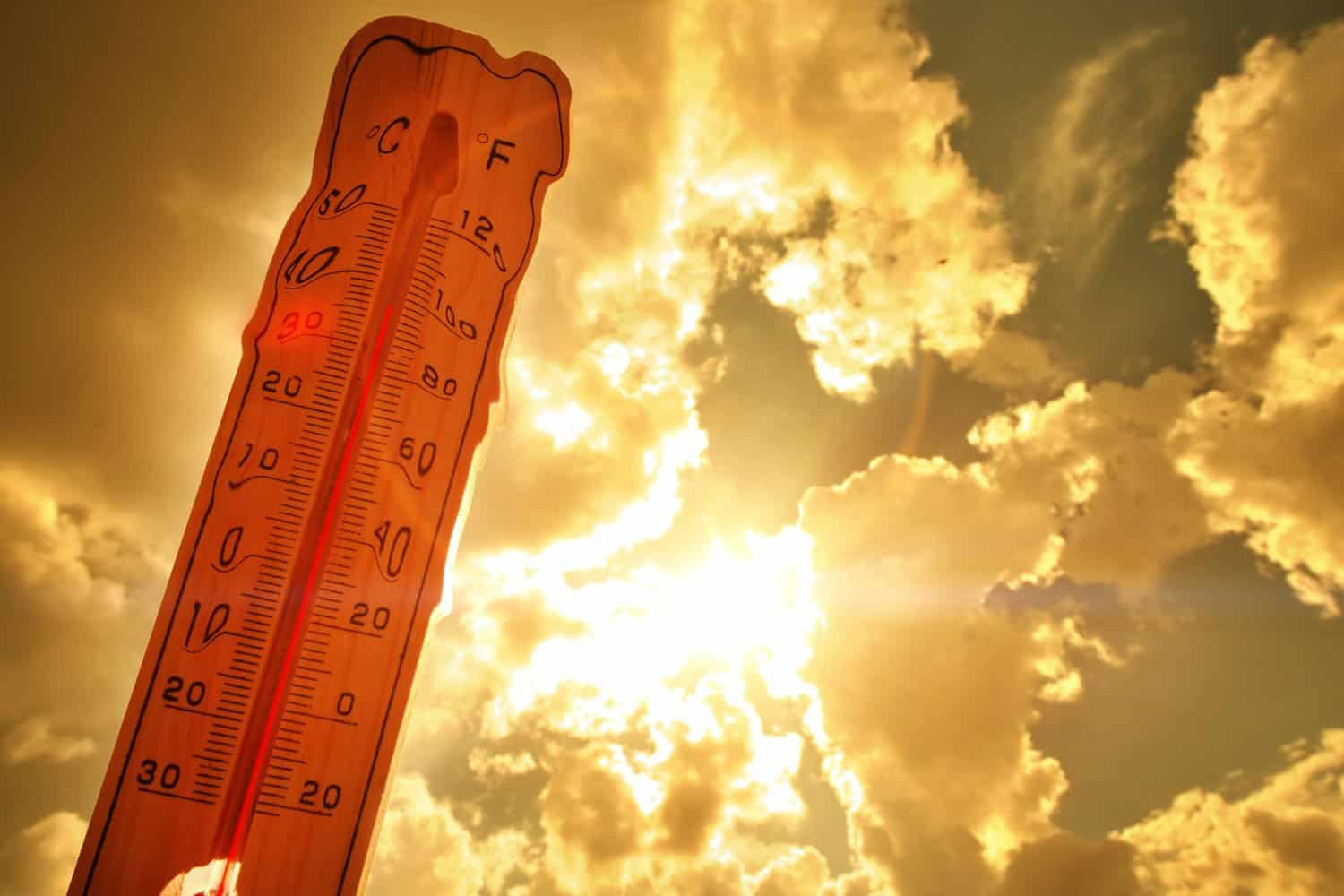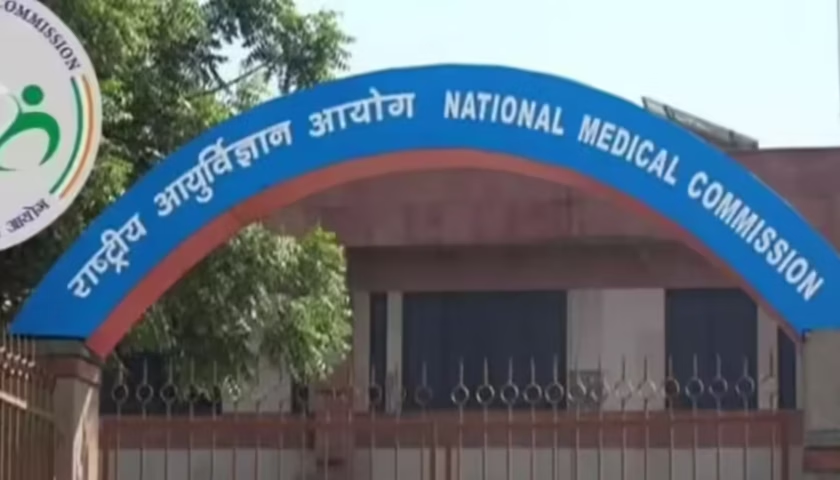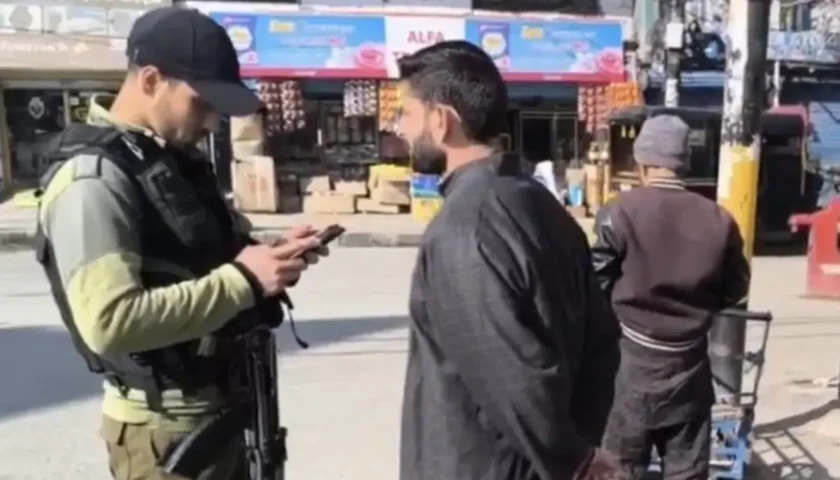Record Temperatures Scorch the Valley and Plains
By: Javid Amin | Srinagar | 14 June 2025
Jammu & Kashmir is currently battling one of its harshest pre-monsoon heatwaves in recent memory. The region is experiencing temperature spikes of 5°C to 7°C above normal in the Kashmir division, while parts of Jammu are reporting deviations of 4°C to 6°C — alarming figures that have prompted a yellow alert from the India Meteorological Department (IMD).
On June 13, Srinagar recorded 32.4°C, unusually high for this time of year in the Kashmir Valley. Meanwhile, Jammu sizzled at 43.6°C, turning city roads into heat corridors and pushing public health systems into alert mode.
Meteorologists describe this as a “compound weather stress” — where elevated temperatures, reduced humidity, and atmospheric instability combine to create a severe heatwave scenario across both divisions of the Union Territory.
Understanding the Heatwave: What’s Causing the Extreme Temperatures?
Weather experts point to a persistent ridge over northwestern India, which is blocking the inflow of cooler westerlies and allowing dry, hot continental air to dominate over the region. The absence of pre-monsoon showers and a delay in westerly disturbances have further worsened the situation.
According to IMD officials in Srinagar:
“These anomalies are not unexpected in a changing climate, but what’s unusual is the spatial spread — both Jammu and Kashmir divisions are affected simultaneously.”
This heatwave is part of a larger weather anomaly gripping northern India, where states like Punjab, Himachal Pradesh, and Delhi are also reporting record-breaking temperatures.
Monsoon Update: Relief Likely Sooner Than Expected
There is some good news on the horizon.
The southwest monsoon is expected to arrive in Jammu & Kashmir around June 20, nearly 10 days ahead of schedule. This early onset is likely to bring much-needed relief, especially to the agricultural belt of south Kashmir and the plains of Jammu, where water stress is already being reported.
Farmers have welcomed the forecast, hoping that an early monsoon will mitigate crop damage and ensure a steady sowing cycle for maize, paddy, and pulses.
However, the Meteorological Department warns that monsoon onset does not mean immediate cooling. The transition period between the current heatwave and consistent monsoon rainfall could still see sporadic high temperatures, dry spells, and wind events.
Gusty Winds, Dust Storms Add to the Weather Woes
The Meteorological Centre in Srinagar has issued a weather advisory predicting gusty winds ranging from 30–40 km/h, especially over central and southern Kashmir. The dry surface conditions may lead to localized dust storms, reducing visibility and increasing respiratory discomfort.
Districts like Budgam, Pulwama, Anantnag, and Shopian have already reported episodes of airborne dust, causing concern among health professionals.
“Dust particles combined with heat exposure can exacerbate asthma, allergies, and eye infections,” warns Dr. Sameer Qureshi, a pulmonologist at SMHS Hospital.
Authorities have asked residents in dust-prone zones to wear masks and limit outdoor exposure, especially during the peak afternoon hours.
Government Response: Heat Protocol Activated
In anticipation of escalating health emergencies, the Jammu & Kashmir administration has implemented a multi-layered Heat Action Plan. Here’s what has been activated:
Urban Cooling Measures
-
Water sprinklers have been deployed across major urban centres like Jammu, Srinagar, Budgam, and Baramulla.
-
Municipal corporations are spraying roads during midday hours to reduce surface heat and lower localized temperatures.
Hospital Preparedness
-
Government hospitals and primary health centres have been placed on high alert.
-
Special ORS (Oral Rehydration Solution) corners, IV drip units, and emergency treatment rooms have been set up in hospitals across the UT.
-
Mobile medical teams are on standby in heat-vulnerable areas like Rajouri, Reasi, and Samba.
Public Awareness Campaigns
-
Health departments and disaster management authorities have issued heatwave advisories via radio, social media, and SMS alerts.
-
Residents are being advised to:
-
Avoid going out between 11 AM and 4 PM
-
Stay hydrated
-
Wear light-colored, breathable cotton clothing
-
Use headgear, sunglasses, and umbrellas when outdoors
-
Special Measures for Vulnerable Groups
Recognizing that children, elderly citizens, and outdoor workers are most at risk, specific advisories have been shared:
-
Schools in districts like Poonch, Kathua, and Shopian have been asked to reschedule outdoor activities.
-
Construction and field workers have been advised to shift working hours to early mornings or late evenings.
-
Anganwadi centers are distributing ORS sachets and electrolyte water to children and nursing mothers.
Weather Forecast: What to Expect in the Coming Days
June 14–15
-
Continued heatwave in Jammu region, slight dip in Kashmir due to gusty winds
-
Dry weather with no significant rainfall
June 16–17
-
Isolated thunderstorms and light rain expected in Kupwara, Bandipora, and Kulgam
-
Slight relief with temperatures dipping by 1–2°C
June 18–20
-
Monsoon onset likely in south Kashmir, gradually moving to central and north Kashmir
-
Widespread rain may bring down temperatures significantly
The IMD has warned against assuming instant cooling, as the first monsoon showers can be patchy and uneven. Full relief will be visible only after 3–4 days of consistent precipitation.
Citizens React: “It Feels Like Delhi in June”
Locals in Srinagar have been vocal about how unusual the weather feels.
“It feels like we’ve been transported to Delhi or Rajasthan. We are not used to these temperatures in June,” says Nayeem Ahmad, a shopkeeper in Rajbagh.
Electricity consumption has skyrocketed, with air conditioners and fans running round the clock in Jammu, while ceiling fans and coolers — once rare in Kashmiri homes — are becoming household necessities.
Vegetable vendors, rickshaw pullers, and daily wage laborers are particularly distressed. Non-profits like HelpLine Kashmir and Doctors on Call have started distributing cooling kits, including glucose packets, portable water bottles, and cotton towels.
Signs of Heatstroke: Public Advised to Stay Vigilant
Authorities have circulated symptom checklists across neighborhoods, schools, and health centers:
Common Signs of Heatstroke:
-
Persistent headache or dizziness
-
Nausea, vomiting
-
Excessive sweating followed by dry skin
-
Muscle cramps
-
Weak pulse or confusion
-
Rapid heartbeat
-
Loss of consciousness
“If you feel lightheaded or stop sweating despite the heat, seek medical help immediately,” advises Dr. Rizwana Nisar, emergency physician at GMC Anantnag.
Tips to Beat the Heat: Government and Health Officials Recommend
-
Drink 3–4 liters of water a day, even if you don’t feel thirsty
-
Avoid caffeine, carbonated drinks, and spicy foods
-
Use wet cloth compresses or cold foot soaks to lower body temperature
-
Consume seasonal fruits like watermelon, cucumber, and buttermilk
-
Keep pets indoors and ensure they have access to water
Government Statement: “We’re Monitoring the Situation Hourly”
Divisional Commissioner Jammu, Ramesh Kumar, assured that all departments are working in tandem:
“We’re receiving hourly updates from IMD and ground teams. Emergency services are fully activated. Relief from the monsoon is coming, but we urge citizens to cooperate and follow health advisories.”
The Disaster Management Authority (SDMA) has also activated contingency plans for fire safety, power outages, and water tanker supply, especially in rural belts.
Looking Ahead: Will This Be a Trend?
Climate scientists warn that frequent and intense heatwaves may become the new normal for regions like Jammu & Kashmir, which were traditionally known for moderate summers.
Rising global temperatures and changing rainfall patterns are altering the Valley’s microclimate, making heatwaves and dry spells more probable.
“We need climate-resilient infrastructure, green urban planning, and early warning systems,” said Dr. Parvez Mattoo, a climate researcher at Kashmir University.
Bottom-Line: Prepare for the Heat, Hope for the Rain
Until the monsoon arrives, Jammu & Kashmir remains under high heat alert, with temperatures likely to stay elevated over the next few days. The government’s proactive measures have helped, but citizen cooperation remains crucial.
Stay safe. Stay indoors. Stay hydrated. Relief is on the way — if the skies keep their promise.




